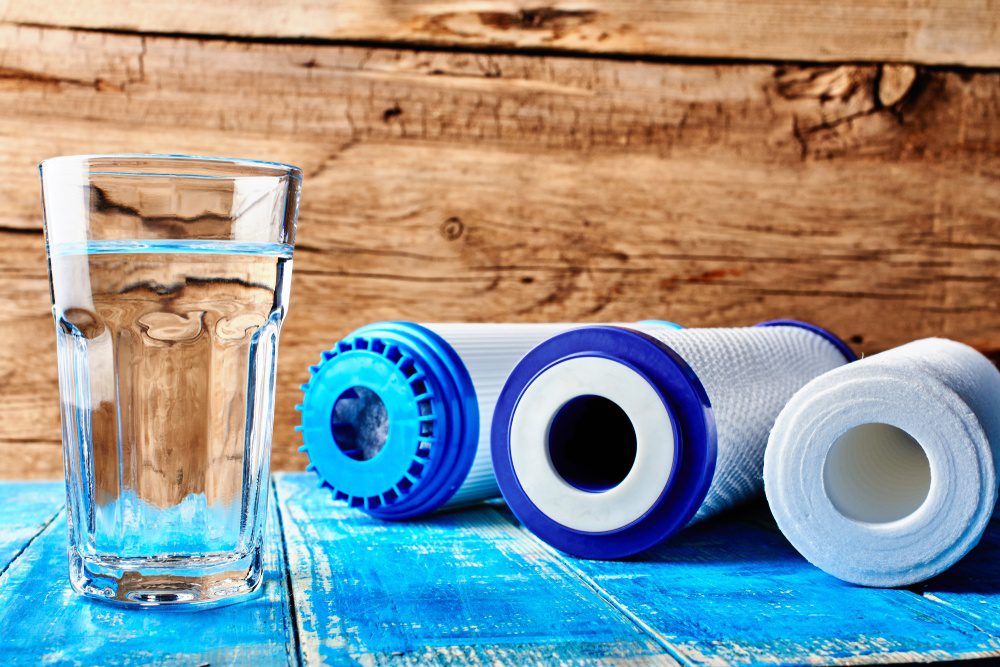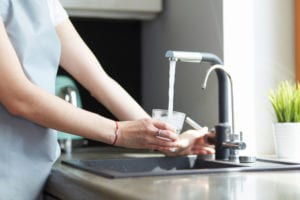
Access to clean, safe drinking water is crucial to staying healthy. If you want to keep your family safe, you need to decide whether you should be drinking tap water or filtered water. After all, the average person should consume over three liters of water every day.
Table of Contents
If you’re wondering about the differences between tap water vs. filtered water, make sure to keep reading. We’ll tackle this in-depth so you can make the best decision. We’ll also show you how you can get the best benefits of both right from your faucet.
Where Does Jacksonville Water Come From?
Water in Jacksonville is supplied by the Jacksonville Electric Authority (JEA). The JEA is a community-owned water, electric, and sewer utility in northeast Florida.
Water from the JEA does meet the EPA’s legal requirements for quality and safety. However, there are still trace contaminants; they are just lower than the maximum allowed levels. Some, including the Environmental Working Group, feel the EPAs limits are too lenient. They say the water could have some health concerns.

Where Does Filtered Water Come From?
You generally have two options to get filtered water. You can buy it in bottles in the grocery store or have it delivered. These will generally say “filtered” on the label. Or, you can get filtered water from a home water filter.
Even bottled, filtered water tends to start as tap water. It’s then run through a filter which removes chlorine. It’s then ozonated and bottled. Essentially, it’s tap water without chlorine.
If you are interested in using filtered water, water filtered at home is much more affordable than bottled, filtered water.
How Is Water Filtered?
Water from most public utility plants goes through a four-step process to filter it. The water you buy in bottles and even the water you filter at home is filtered similarly. These steps include:
- Coagulation and flocculation
- Sedimentation
- Filtration
- Disinfection
In the first step, chemicals are added that bind with existing debris. This creates larger sediment particles called “flocs.” During the sedimentation step, the larger flocs sink to the bottom of the tank because they weigh more. This leaves cleaner water at the top.
In the third step, the water moves through a filter which removes the flocs for good. In the final step, chlorine is added to the filtered water. This kills any bacteria, viruses, and other germs that may have made it through so far.
What Doesn’t This Remove?
While the water filtration process removes quite a lot of contaminants, it doesn’t get rid of everything, including two big contaminants: lead and nitrate.
Lead can create a huge health hazard. Many older buildings were built with lead water pipes. These decay over time, allowing a lot of debris to get into the water. Unless they are maintained with phosphate, unhealthy chloride levels can get into the water.
Large amounts of nitrate can seep into the water, especially in rural areas where cattle are present. This can be very dangerous to newborn infants.
Benefits of Tap Water
If you buy bottled, filtered water, you’ll be going through many bottles over time. This can add up in cost very quickly. Meanwhile, if you drink tap water, it doesn’t require you to buy relatively expensive water constantly. It is also cheaper than other forms of filtered water since you don’t need to buy a new filter every so often. This also leads to less maintenance.
Tap water is also environmentally friendly. Just think of how many single-use plastic bottles you would need to go through just to stay hydrated for one week.
Benefits of Filtered Water
Perhaps the biggest reason to drink filtered water is that it is healthier. The filtration process removes most contaminants and impediments. Tap water tends to retain more bacteria, which can be plentiful and harmful depending on your region. You don’t need to worry as much about being exposed to these from filtered water.
Many people also feel that filtered water tastes better than tap water. The filter removes contaminants that can give your water off-flavors, such as a strong mineral or metallic taste.

Get a Water Filtration System For Home
What if there was a way to get the health and taste benefits of filtered water while allowing you to drink tap water? A home water filtration system is the answer.
A reverse osmosis system runs your tap water through a special membrane. This membrane traps contaminants and only lets water molecules through. This means it can do more than even traditional water filters. It can remove lead, nitrate, and other harmful contaminants that traditional filters might not. You’ll have the safest and best drinking water you can get right from your tap.
If you’re wondering, “Do I need a water filtration system?” give Fenwick a call. Our specially-trained licensed plumbers are experts on residential water filtration systems and can help you figure out the best options for you. We’ll help you choose and configure a home reverse osmosis system to make supplying your home with healthy drinking water easier. Plus, we’ll always be there if you ever need replacement or repair.
Protect Your Health with a Water Filtration System
Choosing between tap water vs. filtered water doesn’t have to be difficult. With a home reverse osmosis system, you can rest easy knowing your water is free from harmful contaminants while getting the convenience of tap water.
If you’re ready to protect your health, call Fenwick or schedule online. Our plumbers are looking forward to getting you the best drinking water possible and helping you choose the home water treatment solution you’ll love for years to come.


